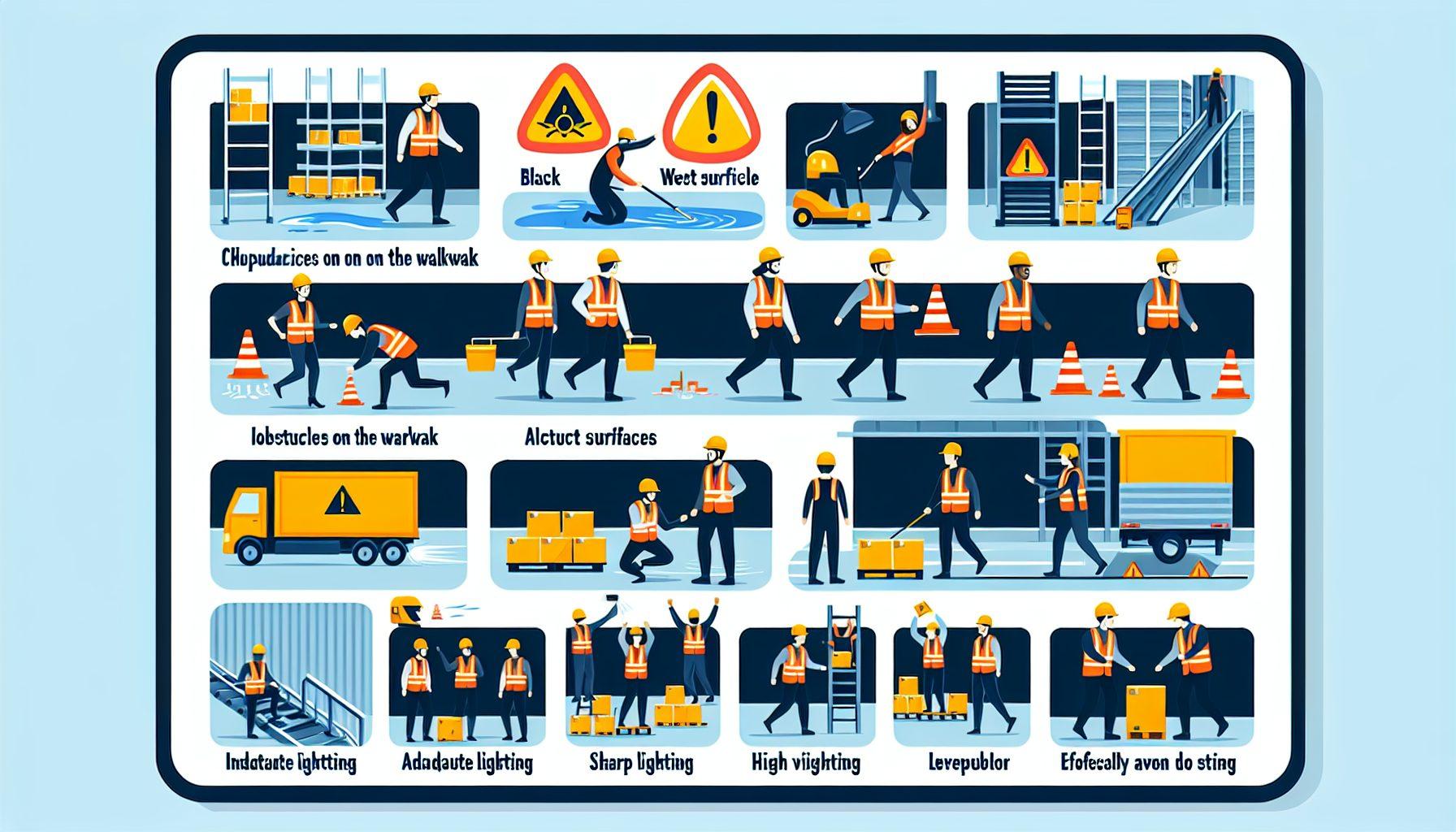Warehouses are bustling hubs of activity, with workers, machinery, and inventory constantly moving around. This fast-paced environment can increase the risk of accidents and injuries if proper safety measures are not in place. One area of concern is walkway hazards, which can pose a threat to both workers and the efficient flow of operations. In this article, we will explore some common walkway hazards in warehouses and provide insights on how to avoid them.
Poor Housekeeping
One of the leading causes of walkway hazards in warehouses is poor housekeeping. When walkways are cluttered with debris, pallets, or equipment, it becomes difficult for workers to navigate safely. These obstructions can impede visibility and increase the likelihood of slips, trips, and falls. To mitigate this risk, it is essential to enforce proper housekeeping practices.
Implementing a regular cleaning schedule and assigning designated areas for storing equipment and pallets can help keep walkways clear. Additionally, providing sufficient storage solutions, such as shelving or racks, can prevent items from being left on the floor.
Utilizing a forklift pedestrian detection system can also be beneficial in reducing the risk of accidents related to poor housekeeping. These systems use advanced technology to detect pedestrians in the vicinity of forklifts, alerting operators to potential hazards and preventing collisions.
Inadequate Lighting
Another common walkway hazard is inadequate lighting. Dimly lit areas make it harder for workers to see potential obstacles, leading to a greater risk of accidents. Dark corners, poorly illuminated stairways, and areas with low visibility increase the chances of slips, trips, and collisions.
To address this issue, warehouses should prioritize proper lighting throughout their premises. Installing adequate lighting fixtures, especially in areas with heavy traffic and potential obstructions, can significantly enhance visibility and minimize the risk of accidents.
Regular maintenance and inspections of lighting systems are also essential to ensure optimal functionality. Burnt-out bulbs should be promptly replaced, and any flickering or inconsistent lighting should be investigated and rectified promptly.
Faulty or Inadequate Signage
The absence, misuse, or improper placement of signage is another factor contributing to walkway hazards in warehouses. Clear and effective signage plays a crucial role in alerting workers to potential dangers, guiding them to safety exits, and warning them of specific hazards.
Warehouses should have visible signs indicating pedestrian walkways, indicating areas where forklifts are operated, and providing guidance on speed limits. Signage for fire exits, emergency evacuation routes, and hazardous areas should also be prominently displayed and regularly maintained.
It is crucial to educate workers about the meaning and importance of different signs and encourage them to adhere to safety instructions communicated through signage.
Lack of Proper Training
One of the root causes of many walkway hazards in warehouses is a lack of proper training. When workers are not adequately trained in safety procedures and awareness, they may not be aware of potential hazards or understand how to avoid them. This lack of knowledge can increase the risk of accidents.
Warehouse management should invest in comprehensive training programs for all employees, including new hires, as well as regular refresher training sessions. Training should cover topics such as proper lifting techniques, recognizing and avoiding common hazards, and operating machinery safely.
Encouraging a culture of safety and promoting open communication can also help in identifying and addressing potential hazards proactively.
Conclusion
Walkway hazards in warehouses are a significant concern, but they can be mitigated through proper planning, awareness, and implementation of safety measures. By prioritizing housekeeping, ensuring adequate lighting, utilizing effective signage, and investing in comprehensive training programs, warehouses can create a safer environment for their workers and optimize their operations.
By taking the necessary precautions and utilizing advanced warehouse optimization solutions, such as forklift pedestrian detection systems, warehouse operators can reduce the occurrence of accidents and injuries, improve productivity, and create a more efficient and cost-effective warehouse operation.

